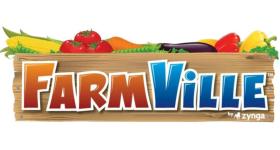The Path to Mastery -- The GU Farmville Series

The process of mastering a given animal rewards farmers with XP and coins for achieving each Level of Mastery in a process that is very similar to Crop Mastery, though there is one important difference, and that is that animals do not generate bushels. Instead they can be a source of components for completing the collections in the game -- an aspect that we will discuss in some detail later in this article.
The three levels of Animal Mastery are also represented by stars -- while in the game, click on the Ribbon Button in the lower right of the game interface to pull up the menu and then select Mastery from that, and Animals from the next menu to obtain a complete list of all of the animals for which Mastery is available.

The first page of the Mastery Status Window for Animals contains the following animals:
Alpaca, Alpine Dairy Goat, Alpine Goat, Alpine Ibex, American Black Bear, American Cow, American Horse, and American Minx. You will notice that just like the Crop Window, there is no relationship linked between the animals in the top row and those of the row below it -- but if you examine the Tree Window you will see that there is a relationship.
This is unique to Trees, and if you examine the Tree Window you will note that the top line is labled "Level 1" and the bottom line "Level 2" to represent the basic and advanced generations of tree lines. We will examine this in some detail later in this article, I just wanted to point that out so that you are aware of it now.When you mouse over the icon for the Alpaca you will note that a display will pop-up showing you your current progress towards the next level -- in this case, as you have not made any progress towards the next level at all, the display will read "0/3 harvests" -- which means that after harvesting three Alpaca you will reach Level 1 Mastery!
Unlike the other two types of mastery there does not appear to be any bonus associated with harvesting animals that you have already mastered, but like the other two types of mastery, once you have attained Level 3 Mastery you are given a sign to place on your farm. In the case of Animal Mastery the sign is uniquely different than those of Crops and Trees -- for one thing the Mastery Signs are dark brown in color, which makes them quite distinct. Like the other two types of signs, they contain a picture of the Mastered item, and when you mouse over them, it also identifies the type of animal that has been mastered.
Tree Mastery is unique in that Trees in Farmville exist as basic and advanced generations. If you examine the first screen of the Tree Mastery Window you will note that the first tree listed in the top left is the Acai Tree, and directly below it, the Peach Palm Tree, which is the advanced generation of the Acai Tree.
When you mouse over the Acai Tree icon you will note that it displays your progress to the next level, as does the icon for Peach Palm Trees. That is the extent of the information that is displayed in this screen, however if you look at trees that you have placed in an Orchard on your farm you will see that there is additional information available there.

The signs for crops have an added function in that they serve as the trigger to unlock the voting process for Super Premium Crop types, with the sign glowing blue when this option is available -- a good reason for being sure that you place your Mastery Signs on your farm!
If you look inside your Orchard now, you will notice that mousing over the stars and bar for a tree inside pops up the type of tree seed that this tree produces. For example a Sour Apple Tree will produce Giant Sour Apple Tree Seeds if it produces a seed. This is important for you to be aware of, because it means that it is more economical and logical for you to purchase just the Sour Apple Tree, and not a Giant Sour Apple Tree, since the first generation tree will net you the second as seeds. This is largely true for most of the tree species, but there are exceptions.
As a general rule, First Generation trees will produce a seed for their Second (Advanced) Generation, but the Second Generation tree will only produce a seed for itself -- hence the Giant Sour Apple Tree will only produce Giant Sour Apple Tree Seeds. Because of that, the only way to obtain Sour Apple Trees is to buy them. This is not universally true however.
A good example of the exception is the Golden Apple Trees. The First Generation is the Golden Apple Tree, while the Second Generation is the Giant Golden Apple Tree. Unlike most species, while the Golden Apple Tree will produce seeds for the Giant Golden Apple Tree, the Giant Golden Apple Tree does not produce seeds for itself, but rather produces seeds for the regular Golden Apple Tree! So in this case having one Golden Apple Tree can, through patient breeding, provide you multiples of both types.


No comments yet. Tell us what you think to be the first.